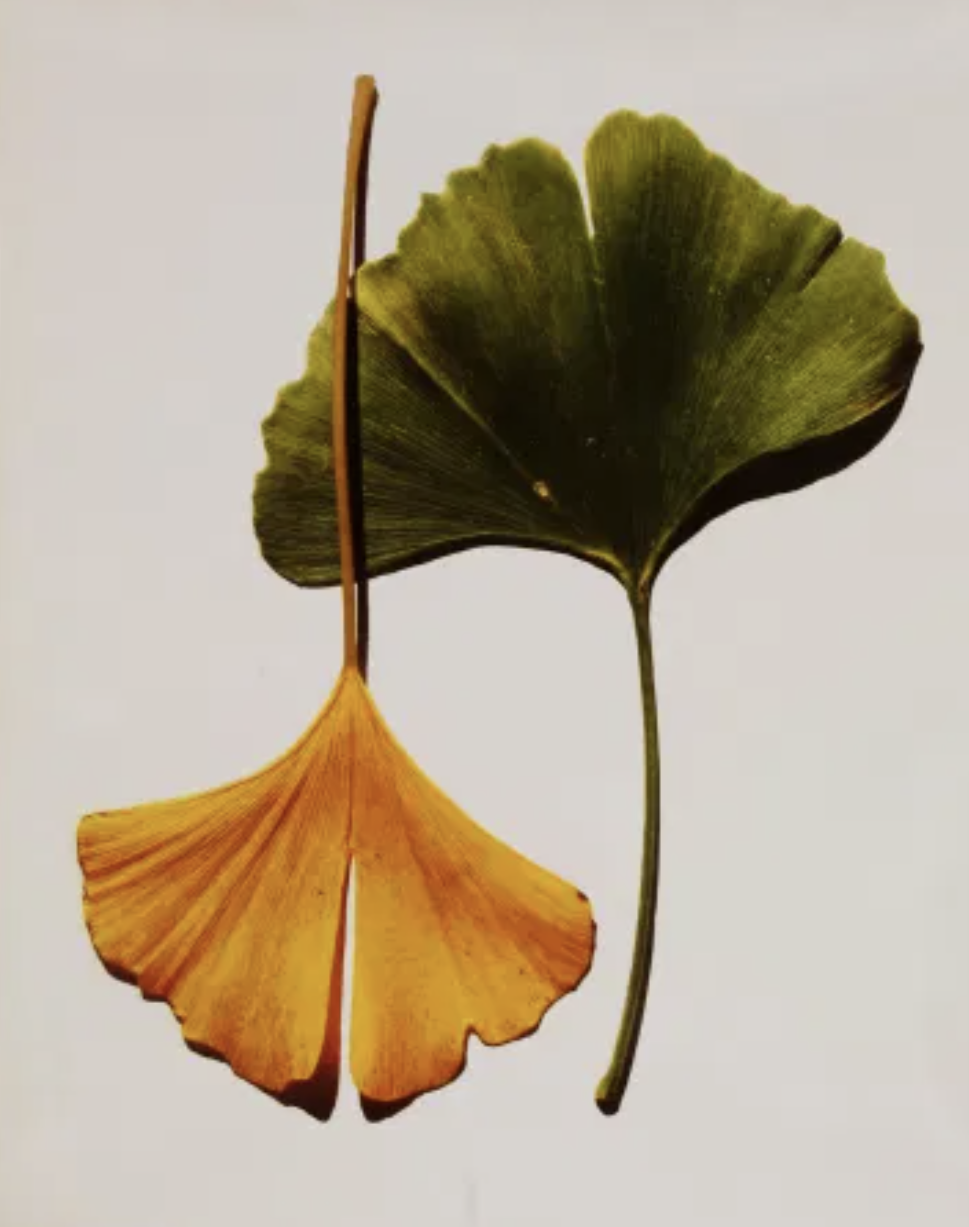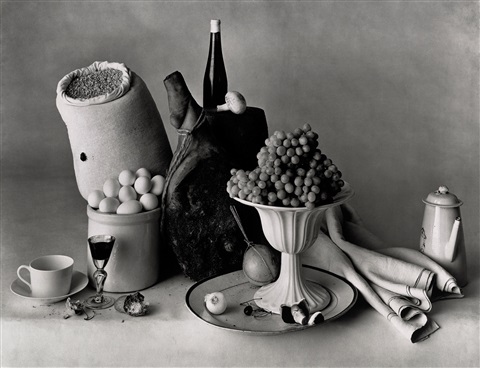A wrist twists while an ankle turns; an eyebrow arches; a body contorts itself to fit in a narrow space, the result is elegant and controlled. He built in his studio a set of upright walls to form a narrow angle and posed his subject there. It makes for awkward positions but powerful compositions! It is a testament to his art that he was able to convince the biggest stars and politicians of his days to submit to his rigorous setting.
When traveling, Irving Penn used a portable studio in a tent, which isolated the subject from their surroundings, turning them into iconic figures and emphasizing the formality of the portrait-taking process.
Irving Penn’s still life images also celebrate the very frailty of their compositions, with objects surgically placed together. The balancing act is fragile and often unexpected. The photographs often remind me of vanitas, the classical paintings that mix luscious flowers and food with symbols of death like rotting plants, flies, or a human skull.
I remember a show at MoMA in New York of his nude studies. The images had been deemed too scandalous when he took them in the 50s and were shelved for decades. They are a striking departure from his iconic photographs of fashion models and movie stars. The bodies are not conventionally beautiful, their curves and round bellies reminiscent of 18th-century paintings.
“I can get obsessed by anything if I look at it long enough. That’s the curse of being a photographer.” Irving Penn
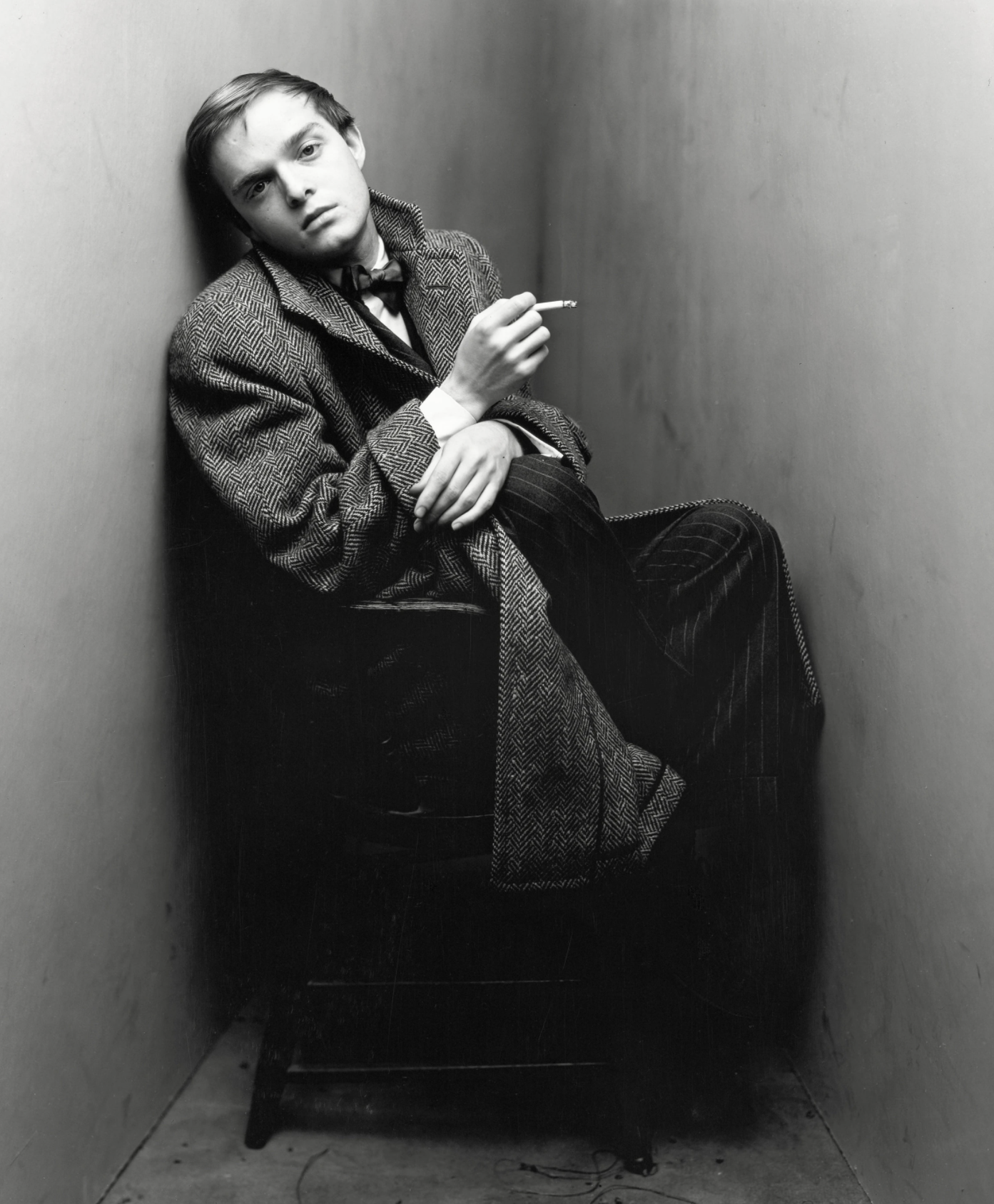
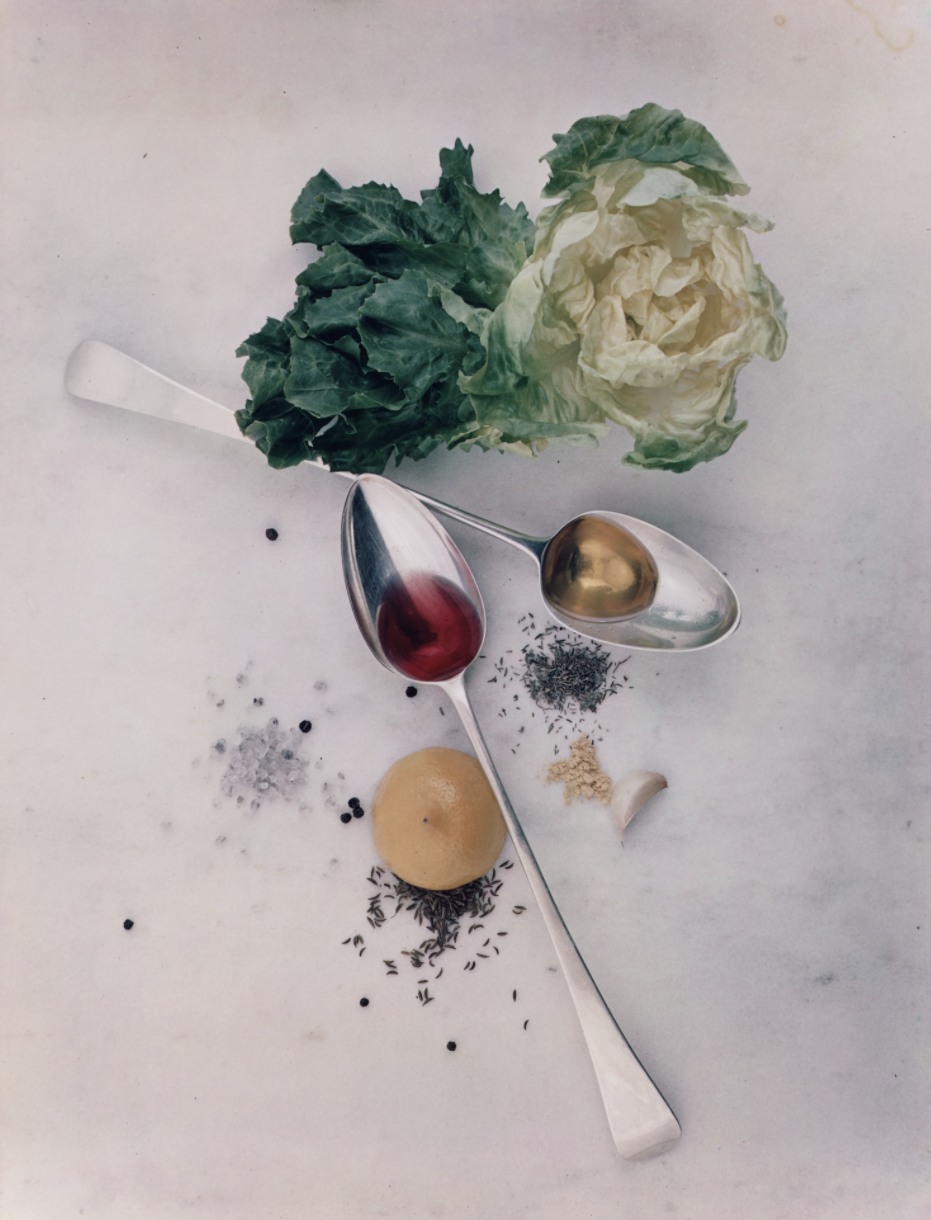
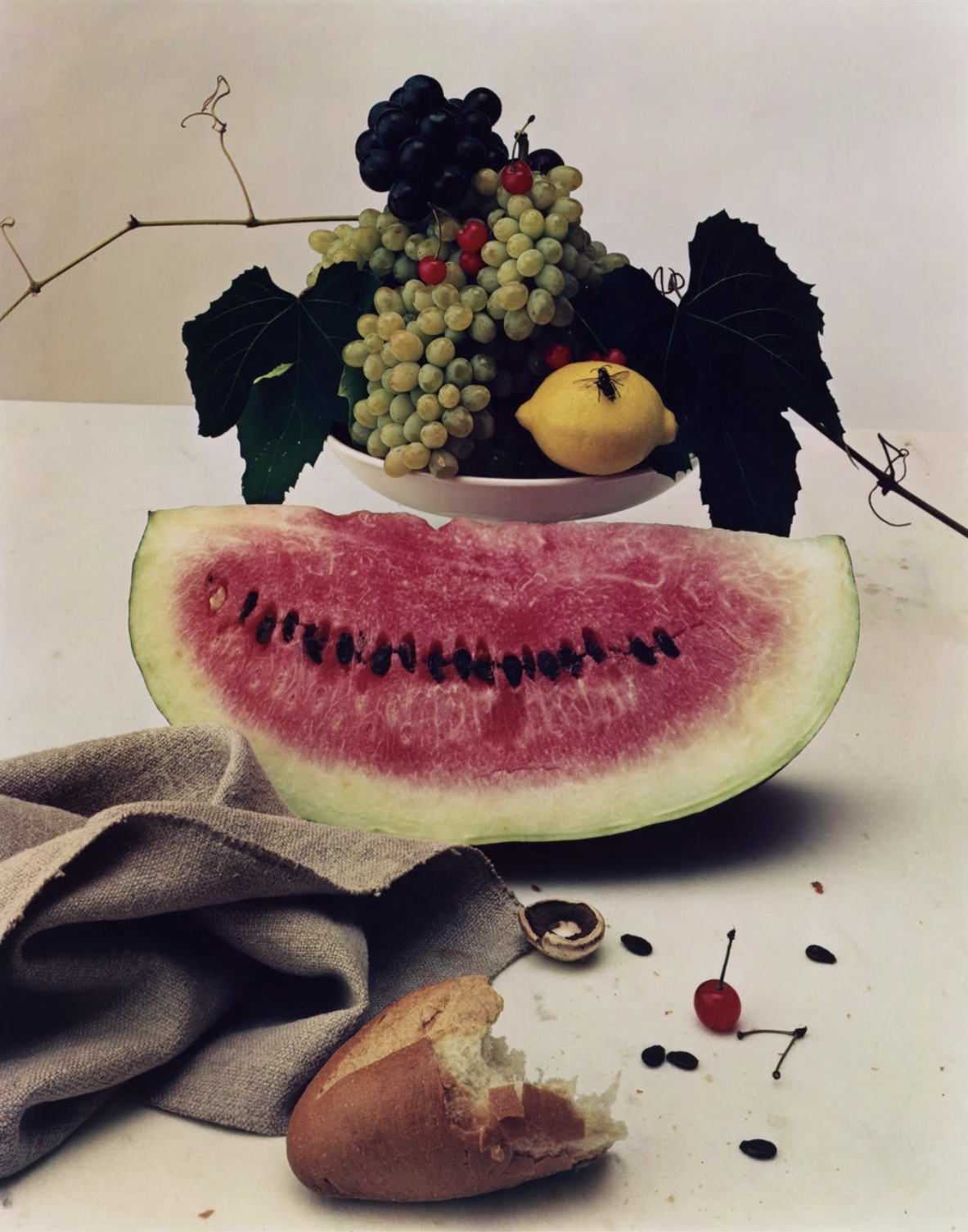
Irving Penn is inextricably linked to American Vogue. We can’t talk about one without talking about the other!
Penn started working as an assistant art director at Harper’s Bazaar and then Vogue back in the 1930s, while dreaming of being a painter. He went to Mexico in 1941 to paint and took photographs along the way. Disappointed by the paintings, he destroyed them – his photographs thankfully didn’t share the same fate! Alexander Liberman, Vogue’s legendary creative director, saw them and encouraged Penn to pursue photography.
Irving Penn’s first photograph to be published in the magazine appeared in 1943. He would go on to shoot for the magazine for 60 years (!!), capturing fashion images as well as portraits and still life. When I first arrived in the US, I used to get American Vogue – it felt like a necessary step to better understand my new home. One of my favorite features was Penn’s still life; using simple objects, he crafted striking images time and time again. He was an integral part of Vogue, and his departure in the early 2000s was earth-shattering news.
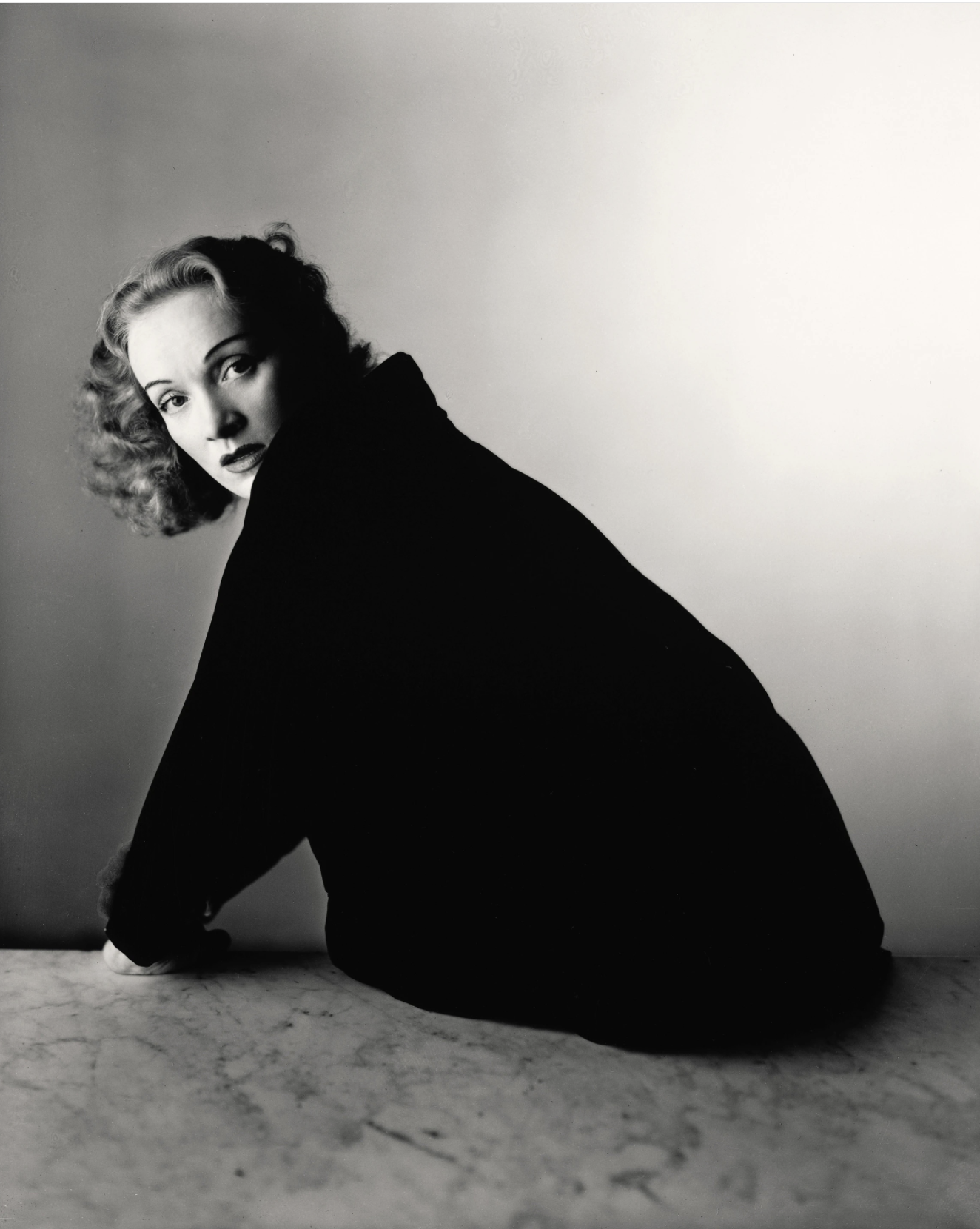
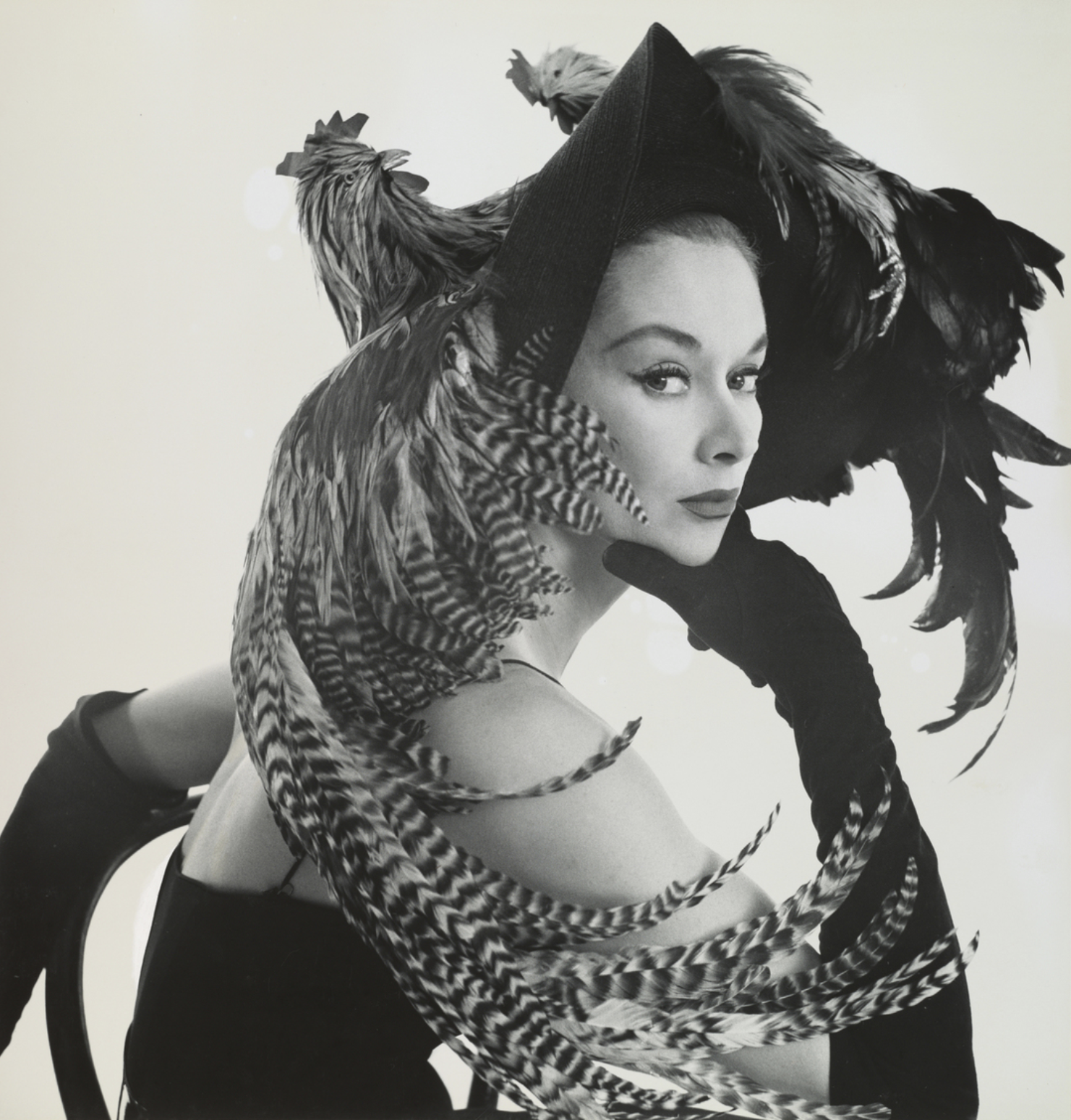
Before rental studios, most photographers had their own space – a luxury few if any can afford nowadays. True to form, Irving Penn had a studio in Manhattan where he shot editorial and advertising assignments. A story runs in New York photography circles that one day an eager new hire took upon himself to wash the skylight. Penn was livid. The years of city dirt gave his studio a beautiful filtered light!
It’s easy to forget how technically challenging film photography could be. Not only shooting with film but also processing, developing and printing all had their tricks and secrets. Penn enjoyed diving into the process and developed and printed his images himself, reviving old techniques and thinking of new ways to secure his vision onto paper.
“A good photograph is one that communicates a fact, touches the heart and leaves the viewer a changed person for having seen it. It is, in a word, effective.” Irving Penn
“Passage” was one of the first photo books I got (its cover is this brilliant still life of two ginkgo leaves).
I bought it in Paris and it followed me when I moved to New York. I still have and love it to this day.
What about you? What was the first photo book you got?
© Irving Penn
Disclaimer: Aurelie’s Gallery does not represent Irving Penn. My “Photographers I love” series is purely for inspiration and to encourage discussion.
